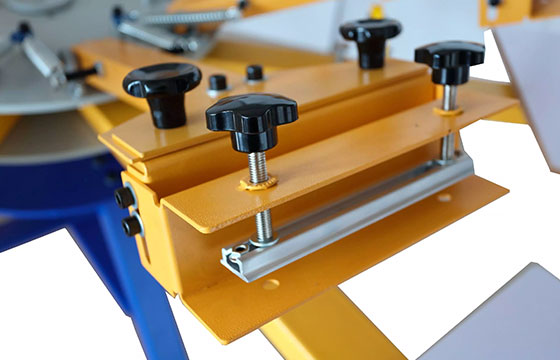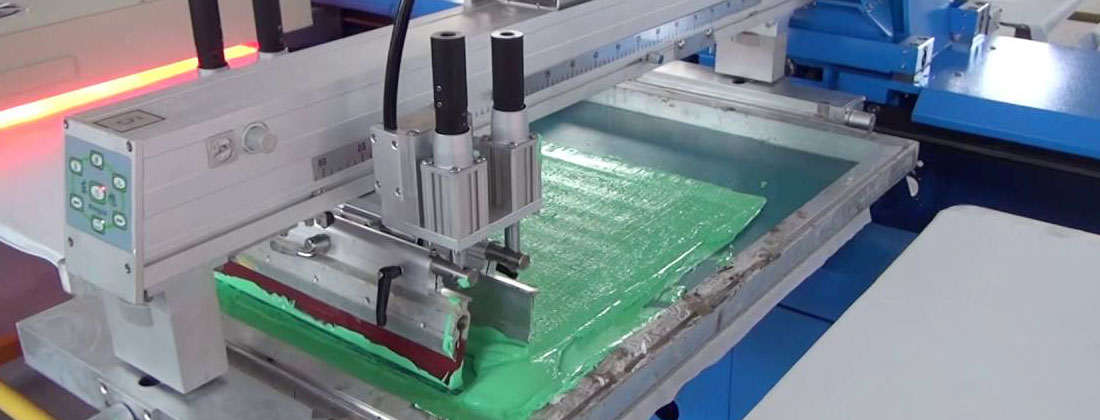China Leading Silk-Screen Printing & Silver Oxidation Services for Metal Surface Treatment
Junying has become one of the best and most diversified die casting companies in China. We provide silver oxidation and silk-screen printing surface treatment services for die casting products, material handled by aluminum and zinc alloy, applicable for electronics, medicals, home applicances, hardware and more. From our silk screen printing & silver oxidation service you will get a customized surface with single or multiple colors. We have full control of the whole process from order to shipping, to assure the greatest quality of the die casting product by silk-screen printing & silver oxidation service and efficiency of the service. We offer fast delivery in 48 hours and large bulk-order discounts.
View some of our actual custom silk screen prints for metal parts (steel, stainless steel, aluminum, zinc, etc.) to see what we can do or to get inspired for your own creative design! Our professional die casting team can turn your logo into something that will look beautiful screen printed on the custom die casting product of your choice. Once you are ready to start your new project, please feel free to contact us for a free quote. Junying is happy to finish your die cast products with the Metal Silk-Screen Printing & Silver Oxidation Service that is appropriate to your goals.
Benefits Of Our Metal Silk-Screen Printing& Silver Oxidation Coating Service
- Excellent quality-price ratio for large print runs
- Perfect colour reproduction
- Durability of personalised items
- Printouts that are resistant to many washing procedures
- Plate making is convenient, cheap and easy to master.
- Not limited by the size and shape of the substrate.

What is Silk-Screen Printing on Metal?

Silk-screen printing is one of the most popular printing techniques, and is the most-used by companies when printing images and designs onto products of different sizes and materials including T-shirts, paper, wood, ceramics, die casting parts and more. Screen printing refers to the use of silk screen as a plate base, and through the photosensitive plate making method, made into a screen printing plate with graphics and text. Screen printing consists of five elements: screen printing plate, scraper, ink, printing table and substrate. The basic principle of screen printing plate is that the mesh of picture and text can pass through the ink, and the mesh of non graphic part can not pass through the ink. During printing, the ink is poured into one end of the screen printing plate, and a scraper is used to exert a certain pressure on the ink position on the screen printing plate, and at the same time, the ink moves uniformly towards the other end of the screen printing plate. During the movement, the ink is squeezed onto the substrate from the mesh of the picture and text part by the scraper.
Types of Screen Printing
Screen printing can be divided into many types according to the different slurries and effects used, such as water slurry printing, glue printing, thick plate printing, foaming printing, hot stamping/hot silver and flocking. Each printing process has its own features and scope of application. For example, water slurry printing has good air permeability and is suitable for clothing; glue printing has beautiful colors and high restoration, and can be used for printing on various materials.
Metal Screen Printing Process – How To Do Silk Screen Printing on Metal Parts?
The process of screen printing generally includes file output, film production, screen production, color printing and ink curing. Among them, file output requires designers to make screen printing files according to printing requirements, and screen production is to make screen frames and mesh according to design documents, and obtain the required graphics and text through exposure and other processes.
The screen printing process of metal products mainly includes the following steps:
1. Prepare the workpiece and screen
First, clean the metal surface to remove oil, dust and oxides to ensure the clarity and adhesion of the printed pattern. Subsequently, a screen plate is made, and the pattern to be printed is fixed on the screen by exposure and development to form a printing template.
2. Adjust printing parameters
In screen printing, parameters such as ink viscosity, printing scraper angle, printing pressure and speed will affect the final printing effect. These parameters need to be adjusted according to the metal surface material and product requirements to obtain a clear and full printing effect.
3. Inking and printing
Place the screen plate on the metal surface and apply the ink evenly on the screen with a scraper. The ink is transferred to the metal surface through the through holes of the screen to form a pattern. Keep the gestures even during operation to avoid uneven ink thickness or pattern deformation due to unbalanced scrapers.
4. Drying and curing
The metal workpiece after printing needs to be dried. Common drying methods include natural air drying, infrared drying or ultraviolet curing. According to the characteristics of the ink and production conditions, choose a suitable drying method to ensure that the ink is completely cured and improve the durability of the printed pattern.
5. Subsequent inspection and packaging
After printing is completed and dried, the product needs to be inspected for quality to ensure that the printing effect meets the standards. If the printed pattern is found to be blurred or the ink is uneven, it needs to be reprocessed or reworked. After the inspection is completed, it is packaged according to production requirements to avoid wear and tear on the printed pattern during transportation and storage.
Why Do Screen Printing on Metal Die Casting Parts?
Below are the main advantages of using screen printing on metal parts:
- High precision: The metal screen printing process can achieve very fine printing effects and is suitable for various metal products with high precision requirements.
- High durability: The ink used in the screen printing process has excellent adhesion and wear resistance, especially for products such as sheet metal chassis and alloy shells that need to withstand frequent use and handling. The printed pattern can not only remain clear for a long time, but also has good waterproof, sun-proof and corrosion-resistant properties, making it adaptable to harsh use environments.
- Multi-color effect: Screen printing supports the application of multiple colors, can achieve a variety of color combinations and gradient effects, and meet the customized needs of different industries for the appearance of metal products. In the field of industrial products, it can clearly identify information such as corporate logos, specifications, models and functional descriptions.
- Low cost and high efficiency: Screen printing is suitable for mass production, especially in the production of large quantities of sheet metal chassis and metal cabinet doors, cost control is more advantageous. At the same time, the operation process is simple and the production efficiency is high, which can meet the needs of large-scale industrial production.
- Wide applicability: Screen printing is suitable for a variety of metal materials, such as stainless steel, aluminum alloy, cold-rolled steel, etc. The surface of these materials is relatively smooth, easy to adhere to ink, and can achieve detailed patterns and text printing.
Metal Screen Printing Applications – In Which Industries is Screen Printing Used on Metal Products?
Metal screen printing technology is widely used in various fields, such as electronic products, auto parts, home decoration, advertising, etc.
- In electronic products, screen printing technology can be used to make conductive lines and component identification on circuit boards (PCBs);
- In the field of auto parts, screen printing technology can be used to print body identification, instrument panels, part numbers, etc.;
- In the field of building home decoration, screen printing technology can be used to make surface decoration of metal curtain walls, metal decorative paintings, doors, windows, furniture and other products.
- In advertising, screen printing technology can be used to make various metal signs and promotional materials.
When Should Metal Products Choose Screen Printing?
The choice of screen printing for metal products is mainly suitable for the following scenarios:
Logo and decoration needs
Screen printing can achieve high-precision printing of text and patterns on metal surfaces such as stainless steel and aluminum alloys, and is suitable for brand identification and appearance beautification of products such as sheet metal chassis and metal cabinet doors. The printed pattern is wear-resistant, waterproof and corrosion-resistant, and is suitable for frequent use.
Mass production needs
Screen printing supports mass production. In the manufacture of metal circuit boards, it can be used to print anti-corrosion films or circuit graphics, with high efficiency and controllable costs. For example, the production of single-sided or multi-layer circuit boards requires screen printing of anti-corrosion inks to retain or remove copper foil to achieve precise production of conductive circuits.
Special ink requirements
Special inks (such as anti-corrosion inks and conductive inks) are required on metal surfaces. Screen printing can be adapted to different types of inks such as solvent-based and UV-curable inks to meet special functional requirements such as corrosion protection and conductivity. For example, waterproof treatment of metal casings or long-term retention of information logos.
Screen Printing or Digital Printing, Which is Better?
Digital printing technology can present stunning images on items such as clothing. It only requires digital files, fewer steps and components, faster startup, and lower costs. It is suitable for small batches and sample production. However, the cost reduction of digital printing is limited, and some characteristics of screen printing (such as high hiding power and special ink effects) cannot be achieved.
At the same time, digital printing supports unique features such as personalization and serial numbers, which is the only choice for some scenes. Its imaging style may also be more suitable for specific works.
There is no absolute superiority or inferiority between the two, they are just different types of printing, each with its own advantages and disadvantages. The key is to choose the solution that best suits the project.

